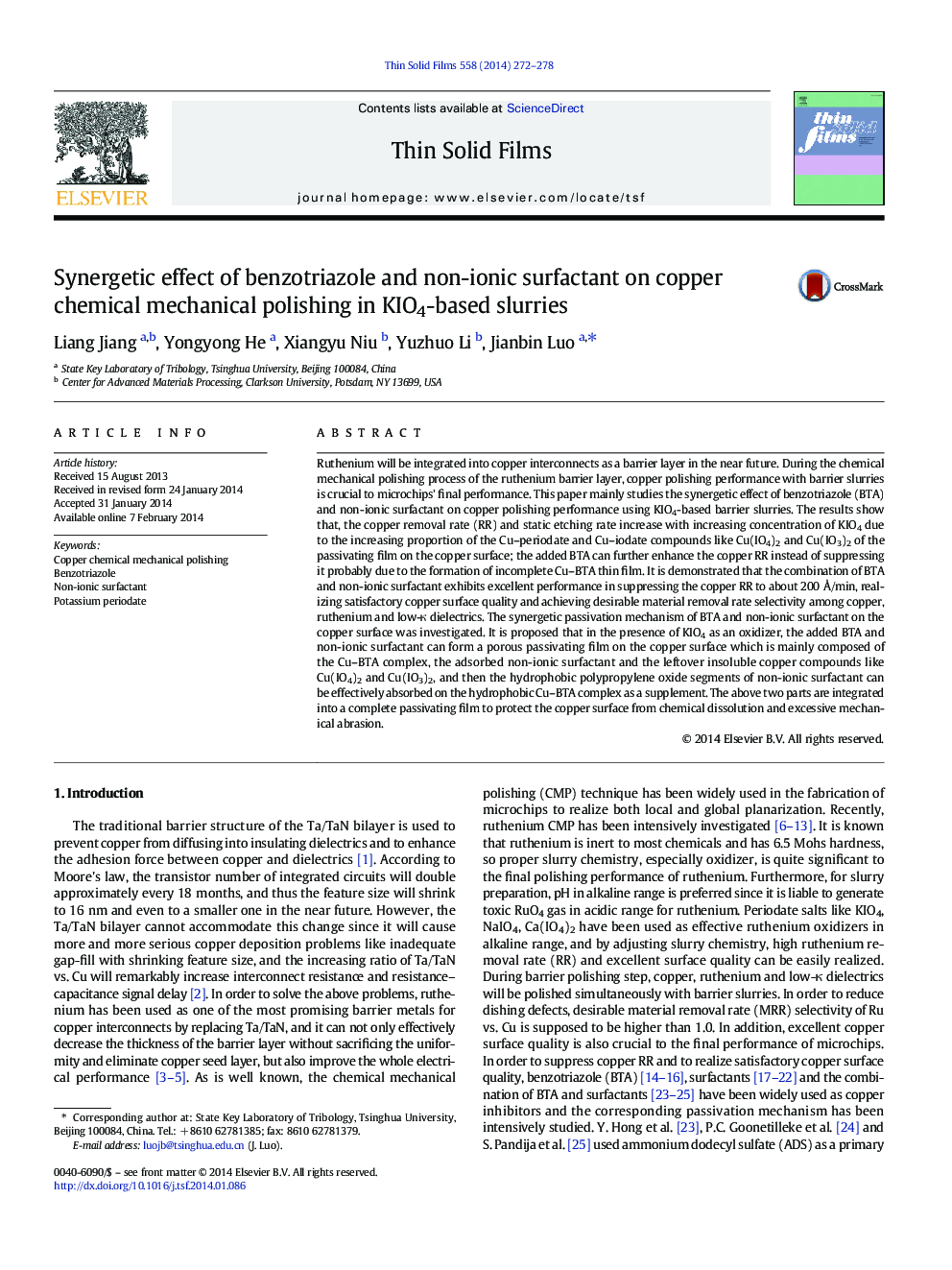| کد مقاله | کد نشریه | سال انتشار | مقاله انگلیسی | نسخه تمام متن |
|---|---|---|---|---|
| 1665462 | 1518046 | 2014 | 7 صفحه PDF | دانلود رایگان |

• The copper removal rate (RR) and static etching rate increase with the increase of KIO4.
• The added benzotriazole (BTA) can further enhance the copper RR instead of suppressing.
• The combination of BTA and Pluronic® P103 exhibits excellent polishing performance.
• The synergetic passivation mechanism of BTA and Pluronic® P103 on the copper surface is proposed.
Ruthenium will be integrated into copper interconnects as a barrier layer in the near future. During the chemical mechanical polishing process of the ruthenium barrier layer, copper polishing performance with barrier slurries is crucial to microchips' final performance. This paper mainly studies the synergetic effect of benzotriazole (BTA) and non-ionic surfactant on copper polishing performance using KIO4-based barrier slurries. The results show that, the copper removal rate (RR) and static etching rate increase with increasing concentration of KIO4 due to the increasing proportion of the Cu–periodate and Cu–iodate compounds like Cu(IO4)2 and Cu(IO3)2 of the passivating film on the copper surface; the added BTA can further enhance the copper RR instead of suppressing it probably due to the formation of incomplete Cu–BTA thin film. It is demonstrated that the combination of BTA and non-ionic surfactant exhibits excellent performance in suppressing the copper RR to about 200 Å/min, realizing satisfactory copper surface quality and achieving desirable material removal rate selectivity among copper, ruthenium and low-κ dielectrics. The synergetic passivation mechanism of BTA and non-ionic surfactant on the copper surface was investigated. It is proposed that in the presence of KIO4 as an oxidizer, the added BTA and non-ionic surfactant can form a porous passivating film on the copper surface which is mainly composed of the Cu–BTA complex, the adsorbed non-ionic surfactant and the leftover insoluble copper compounds like Cu(IO4)2 and Cu(IO3)2, and then the hydrophobic polypropylene oxide segments of non-ionic surfactant can be effectively absorbed on the hydrophobic Cu–BTA complex as a supplement. The above two parts are integrated into a complete passivating film to protect the copper surface from chemical dissolution and excessive mechanical abrasion.
Journal: Thin Solid Films - Volume 558, 2 May 2014, Pages 272–278